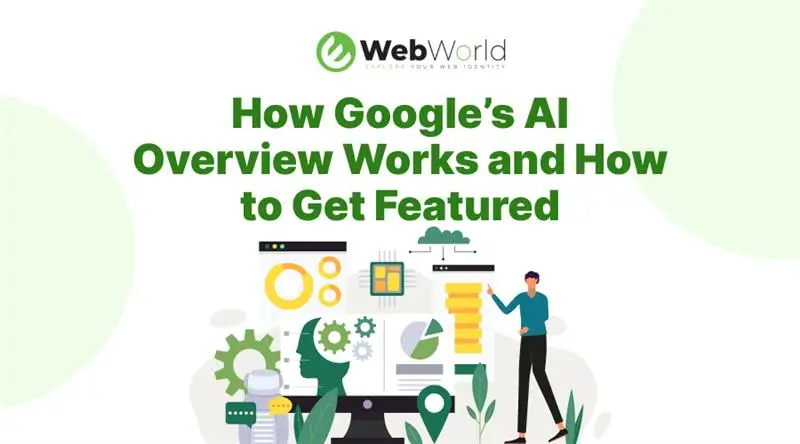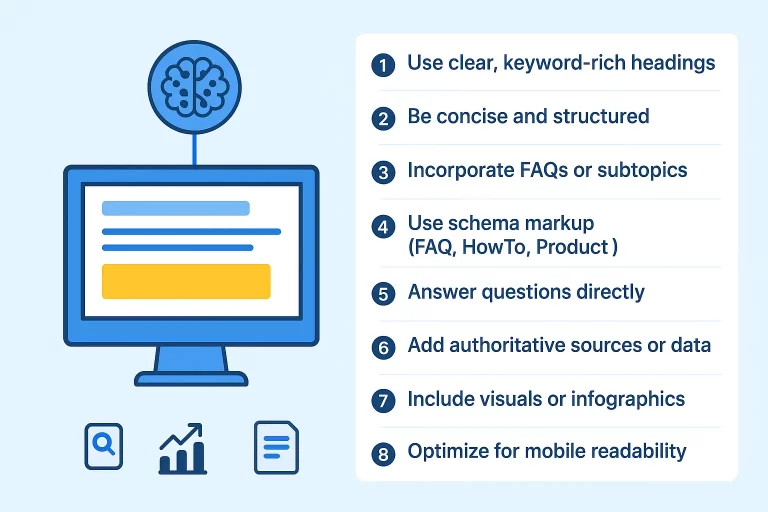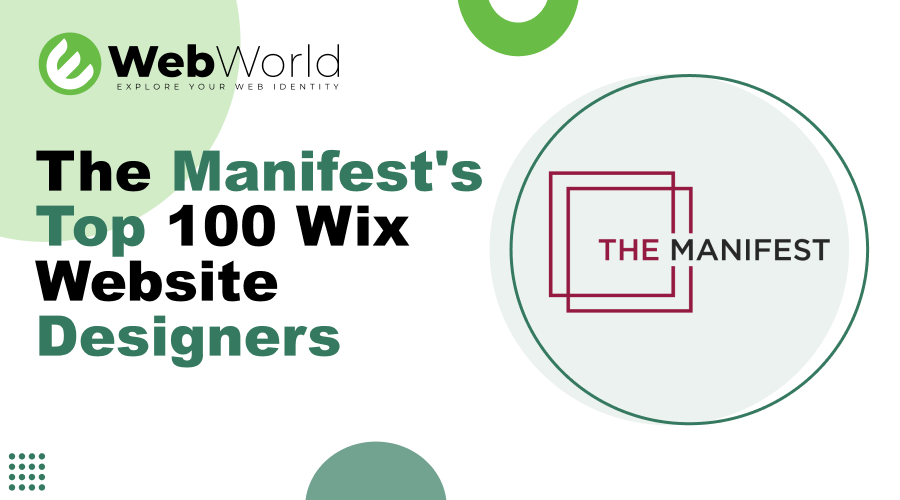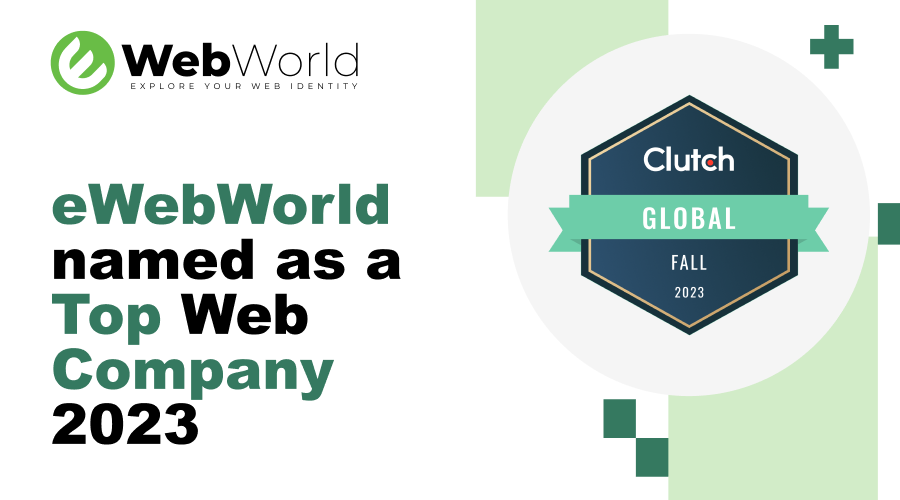How Google’s AI Overview Works and How to Get Featured

Ever noticed how Google now gives you a quick AI-generated answer right at the top of your search results, even before the usual blue links? That’s Google’s AI Overview, a major leap in how search results are displayed. Instead of scrolling through multiple websites, users now get a neatly summarized response, powered by generative AI, right there on the results page.
It’s fast, convenient, and undeniably impressive. But for businesses and content creators, it’s also a game-changer. Because here’s the catch: not every website gets the spotlight. While some brands are cited directly within these AI summaries, gaining instant visibility and credibility, others find themselves pushed even further down the SERP (and sometimes off the first page entirely).
So what determines which pages Google chooses to feature? Is it just about having great SEO, or does AI look for something different now? In this blog, we’ll break down how Google’s AI Overview actually works, what type of content tends to get picked up, and most importantly, how you can optimize your website to earn that prime, AI-powered real estate.
What Is Google’s AI Overview (and How Does It Work)?
Google’s AI Overview is part of its ongoing effort to make search results faster, smarter, and more conversational. Instead of just showing the usual list of links, Google now uses generative AI to summarize information from multiple trusted sources, giving users a quick, clear answer right at the top of the page.
Think of it like this: you search “best mobile app frameworks for 2025”, and instead of scrolling through ten blogs, Google’s AI Overview instantly gives you a summary, listing top frameworks, key stats, and sometimes even visuals, all within seconds.
But how does it know what to show? Here’s the basic flow:
- AI Analysis: Google’s AI scans and interprets existing search results, blog posts, articles, and product pages to identify the most relevant, high-quality information.
- Content Synthesis: It then summarizes those insights into an easy-to-read overview, often pulling from three or more top-ranking pages.
- Source Citations: Each piece of summarized info includes clickable links to the websites it referenced, that’s where you want your content to appear.
- User Context: Factors like search intent, query complexity, and even user location help Google decide whether to show an AI Overview or not.
So basically, it’s not just about keywords anymore, it’s about context, credibility, and clarity. Google’s AI is trying to think like a user, not a bot.
How to Optimize Your Content for Google’s AI Overview

Now that we know what Google’s AI Overview looks for, let’s talk about how to actually earn that spot. The trick isn’t stuffing keywords or gaming the system, it’s about structuring your content so both humans and AI instantly recognize its value.
Here’s how you can do that:
1. Write With Clear Intent
AI Overview thrives on clarity. So instead of vague paragraphs, answer real user questions directly. Use H2s and H3s that echo how people search, like:
- “What is Google’s AI Overview?”
- “How does AI affect SEO in 2025?”
- “How can my website get featured in AI results?”
Think conversationally, like you’re answering a friend’s question — because in a way, you are.
2. Focus on EEAT (Experience, Expertise, Authoritativeness, Trust)
Google wants real expertise. Add author bios, cite credible sources, and use up-to-date data. If you’ve got case studies or examples, it’s even better. That’s experience in action, and AI models love that.
3. Structure for Skimmability
AI doesn’t “read” like humans, it scans. So your content should be easy to break down:
- Short paragraphs (2–3 lines max)
- Subheadings for every key topic
- Bullet points and numbered lists
- FAQ sections at the end
You’re not just helping readers, you’re helping the AI understand you faster.
4. Target Conversational, Long-Tail Keywords
Think of how you’d ask a question to Google out loud.
Example:
“AI SEO” → Too broad
“How does AI impact SEO strategies in 2025?” → Specific, natural, and AI-friendly
These natural queries are gold for AI Overview because they sound just like the questions it’s built to summarize.
5. Keep Your Content Fresh and Factual
AI systems pull from the most relevant, recent information. Regularly update stats, screenshots, and examples. Freshness signals reliability, especially in fast-changing spaces like AI and SEO.
The Impact of AI Overview on SEO Rankings
Let’s be real, AI Overview is changing the SEO game. The traditional “rank #1 and win” mindset doesn’t fully apply anymore. Now, even if your page isn’t the top blue link, your content can still dominate the results, if it’s cited or summarized inside the AI Overview. Here’s what that means in practice:
- Visibility is No Longer Just About Rankings: You could be sitting at position #5 and still get featured in the AI Overview box. That means more eyes on your content without needing to outrank everyone else. But, only trusted, clear, and structured content gets pulled in.
- Click-Through Rates (CTR) Are Shifting: AI summaries often give users quick answers right on the results page. So yes, fewer people might click through for simple queries. But for deeper topics (like “how to optimize for AI SEO”), the AI Overview actually encourages clicks to trusted sources for more details. That’s your opportunity.
- Topical Authority Is More Important Than Ever: AI Overview doesn’t just pick random sources, it favors sites that consistently publish quality content around a theme. So, if your site regularly publishes about Shopify, web design, SEO, or AI trends, you’re building topical authority, the secret sauce for getting cited again and again.
- Quality Signals Beat Quantity: Gone are the days when more pages meant better ranking. AI Overview looks for clarity, correctness, and user-first structure. It values content that answers questions completely and confidently, not just “content that exists.”
- The Future Is AI + SEO: AI Overview isn’t replacing SEO; it’s evolving it. Great SEO now means understanding how AI interprets your site. That includes schema markup, FAQ sections, and natural language optimization.
How AI Impacts SEO in 2025
AI isn’t just assisting SEO anymore, it’s shaping it. From how Google reads your content to how users find answers, artificial intelligence has become the middleman between searchers and your website. Here’s what’s shifting this year (and beyond):
1. Search Is Getting More Conversational
People no longer search like “best Shopify developer India.” They ask:
“Who’s the best Shopify development partner for scaling my eCommerce business?”
AI-powered search understands intent, not just keywords, so content written in a natural, conversational tone has a massive edge.
2. Context and Authority Matter More Than Keywords
AI algorithms now look for expertise, experience, and trustworthiness (E-E-A-T). A single keyword-stuffed post won’t cut it. You need clusters of connected content that show you know your stuff.
3. Automation Is Reshaping Content Strategy
AI tools can help with ideation, optimization, and analytics but the real win is in how human teams use them. Smart marketers combine AI’s efficiency with human insight to create authentic, useful content that ranks and resonates.
4. Visual and Voice Search Are Rising
AI-driven features like image recognition and voice search mean SEO isn’t just text anymore. Websites optimized for multimedia with descriptive alt text, schema markup, and voice-friendly phrasing get more love from Google.
5. Predictive SEO Is the Future
AI is starting to predict what users will search next. Brands that continuously analyze trends and adjust content early will lead the race, long before their competitors even know the game changed.
Concluding Thoughts
The SEO world isn’t ending, it’s evolving. Google’s AI Overview and other AI-powered updates are simply making the system smarter, faster, and more focused on value.
If your content is original, user-centered, and written with intent, you’re already halfway to earning that AI citation. If your website loads fast, offers great UX, and is built with clean code, you’re helping Google trust your site more.
At eWebWorld, we believe SEO and AI aren’t rivals, they’re teammates. The future of digital visibility belongs to businesses that blend both:
- AI for smarter insights and automation,
- Human creativity for strategy and storytelling
Because in the end, the brands that win aren’t just found by Google’s AI, they’re chosen by real people.
People Also Ask
1. What is Google’s AI Overview?
Google’s AI Overview is an AI-generated summary that appears at the top of search results. It uses advanced algorithms to pull relevant insights from credible sources and present quick, accurate answers to users.
2. How does Google choose which content appears in AI Overview?
Google’s AI Overview features content from websites that demonstrate authority, trustworthiness, and relevance. Well-structured, SEO-optimized, and clearly written pages with strong E-E-A-T signals have a higher chance of being cited.
3. How is AI changing SEO in 2025?
AI is making SEO more conversational, intent-driven, and context-aware. Instead of focusing only on keywords, brands now need to focus on creating valuable, authentic content that matches how people actually search and speak.
4. Can AI help improve SEO rankings?
Yes, AI tools can analyze search intent, predict trends, and suggest keyword opportunities faster than ever. When paired with human strategy, AI can boost rankings and drive consistent organic growth.
5. How can I make my website appear in AI-generated search results?
Focus on writing clear, factually accurate content that directly answers user queries. Use structured data, improve your page experience, and build authority through consistent, niche-focused publishing.












